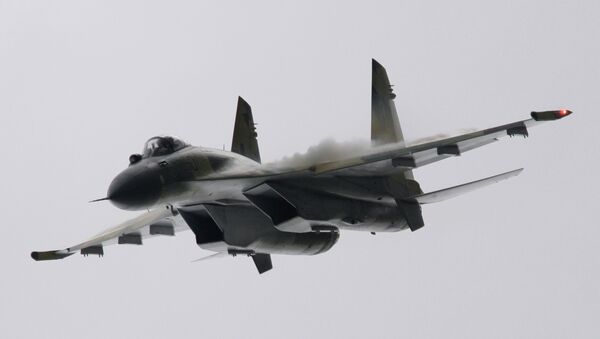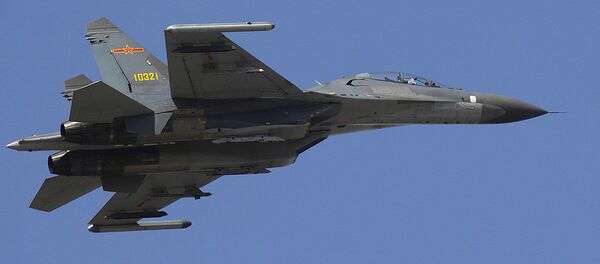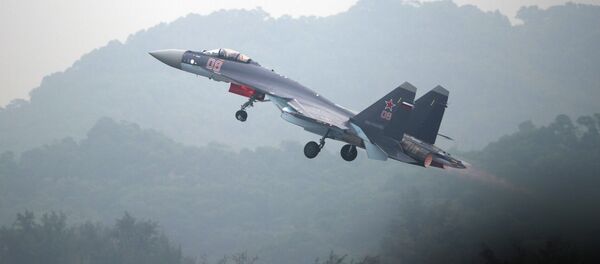Live flight-tracking website Flightradar24 also noted that an Ilyushin Il-76 transport aircraft made by Volga-Dnepr, a Russian charter company, departed from Komsomolsk-on-Amur making its way to Cangzhou-Cangxian Airbase in China’s northern province of Hebei, where the Komsomolsk-on-Amur Aircraft Production Association (KnAAPO) builds Su-35s.
On December 25 the plane landed at Suixi Airbase in Guangdong Province, the nearest Chinese airbase to the South China Sea.
The People’s Liberation Army Air Force’s (PLAAF) Flight Test and Training Centre (FTTC), responsible for developing combat tactics, training programs and flying procedures for new aircraft, is located at Cangzhou-Cangxian.
Although blurry photos appearing to be the Su-35s have surfaced on Chinese social media, it is not known whether the Ilyushin was traveling with PLAAF aircraft or if it was carrying parts and service equipment for the jets.
After five years of intermittent negotiations, Beijing confirmed that it signed a $2-billion contract with Moscow in November 2015 for 24 Su-35s. According to Andreas Rupprecht, who has written three books on Chinese industry and aviation, Beijing’s interest in the jets is rooted in a desire to get their hands on Russian technology.
Rupprecht told Defense News that China is particularly interested in the Saturn AL-41F1S (117S) afterburner turbofan engine which helps gives the Su-35 directional thrust capability.
For several years Beijing has been trying to develop an indigenous fighter jet, but technical issues have stalled progress. Russia’s Saturn AL-31 engine still powers China’s single-engine Chengdu J-10, the Shenyang J-15 carrierborne craft, and the Chengdu J-20 fighter.
When it was first announced that Russia would deliver the fourth-generation fighters, retired Lt. Gen. Evgeny Buzhinsky, from the PIR Center, said he was unconcerned with reverse engineering. "They cannot produce engines. We agreed to supply engines for the Su-35, but fortunately—my technical colleagues told me—that it is practically impossible to copy that engine because it is practically impossible just to reach the heart of the engine without breaking it completely," he told the Diplomat.
Rupprecht pointed out that if the PLAAF’s jets are to be based at Suixi, it is possible that the Su-35s could "act as a long range fighter escorts for the (PLAAF’s) H-6K bombers around the South China Sea or even facing Japan."
The twin-engine, multirole Russian fighter jet could be more apt for combat air patrol and bomber escort mission over the South China Sea by refuelling in flight from a group of Soviet-made Ilyushin Il-78 tankers that China obtained from Ukraine.
This would make the jet more dynamic than the PLA Navy’s Shenyang J-11Bs currently in use.





